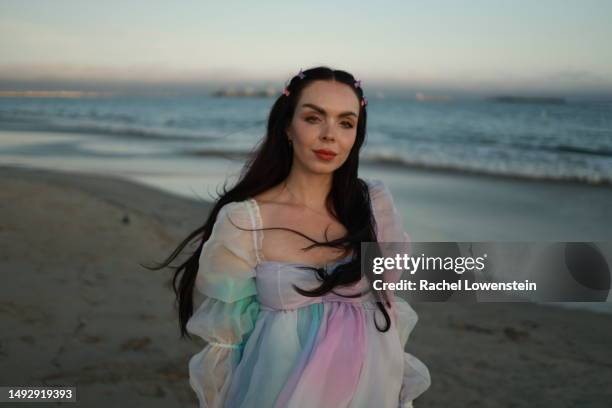
Hijacking Hearts, Not Screens: The Stealth Revolution in Marketing
In an era where digital landscapes are cluttered with advertisements, the challenge for marketers is not only to capture attention but to hold it meaningfully. When steered by a nuanced strategy, technology holds the promise of revitalizing marketing and advertising, making these disciplines relevant and essential threads in the fabric of consumer-brand relationships.
This is a pivotal moment for the industry; data shows a significant uptick in the adoption of ad blockers, with consumers increasingly resistant to traditional advertising methods. It’s a clear signal that many see advertising as a levy on their digital experience—a “poor man’s tax – Scott Galloway” for those either unwilling or unable to pay for subscription services that offer an ad-free environment.

A COMMENTARY by Sebastian Jespersen, who is an innovator, a business strategist, and a breakthrough digital thinker. He founded the independent digital agency Vertic, which is now part of Globant.
The Internationalist features his thinking as part of our Global Marketing at the Crossroads series.
Yet, this challenge also presents an opportunity. For brands willing to pivot, to truly listen and engage with their audiences, the potential to become an integral part of consumers’ lives—a concept I like to refer to as “Share of Life®”—is immense. This goes beyond a single transactional interaction or the fleeting attention won by a clever ad. It’s about cultivating deep, lasting relationships built on value, relevance, and mutual respect.
The strategic shift involves moving from a model that prioritizes volume and reach to one that values engagement and relevance. It’s about recognizing that consumers are not passive recipients of messages but active participants in a shared digital ecosystem. By focusing on creating meaningful interactions, brands can transcend the limitations of traditional advertising, turning potential points of friction into opportunities for connection. When used correctly, technology can move you from a one-to-one relationship to a one-with-one relationship. To achieve this, brands must leverage technology not as a blunt instrument for broadcasting messages, but as a tool for understanding and meeting consumer needs. Advanced analytics, AI, and machine learning can uncover insights into consumer behavior and preferences, enabling personalized experiences that resonate on a deeper level. Social listening tools can foster a sense of community and belonging, while AR and VR can create immersive experiences that bring brands and consumers closer together.
In essence, the future of marketing and advertising lies in a brand’s ability to become a valued part of the consumer’s daily life. It’s a journey that requires not only technological innovation but a fundamental rethinking of what advertising is and what it can be. The goal is clear: to transform advertising from a tax on the consumer’s digital experience into a valued exchange, one that enriches rather than detracts, fostering relationships that are not only lasting but mutually rewarding.
Globant’s recent initiative to launch a specialized studio focusing on creating Connected Experiences underscores how modern brands are being built and evolved, through the number of meaningful digital interactions. This move, especially coming from a technology company not only highlights the recognition of the need for deeper, more integrated consumer-brand relationships, but also that technology requires purpose to create meaningfulness and value for customers. By concentrating on Connected Experiences, Globant is not just adapting to the changing landscape; it is actively shaping the future of how brands interact with their audiences.
For CMOs, this is not just an operational challenge but a strategic imperative. The concept of “Share of Life” should be at the heart of every decision, guiding how brands think about and interact with their consumers. In doing so, brands can navigate the shift from being seen as mere advertisers to becoming integral, cherished parts of their customers’ lives. The journey is complex and requires a reimagining of roles and strategies, but the rewards—a genuine, enduring connection with the consumer—are well worth the effort.
Sebastian Jespersen is an innovator, a business strategist, and a breakthrough digital thinker. He founded the independent digital agency Vertic over a decade ago; today it has a global footprint and serves some of the world’s best-known global marketers and brands. Both a digital guru and evangelist, he has successfully taken a start-up from the birth of the online marketing era through to the advertising world’s new internet playground. All while shepherding Vertic to extraordinary year-on-year growth and profitability. Clients include Microsoft, SAP, GE, Novo Nordisk, Biogen and Eli Lilly.
In 2022, Sebastian sold Vertic to Globant, a leading digital transformation company, after building it into one of the world’s most innovative digital agencies. Under his leadership, Vertic was included in Gartner’s Market Guide for Global Digital Marketing Agencies as one out of only 20 global digital agencies.
Sebastian’s pre-Vertic years as a management consultant in Europe and Asia underscore a multinational, analytical problem-solving vantage point, in contrast to common creative or technical leadership found at most ad agencies today. His interpretation of social business, data, targeting, and the bridging of marketing to sales – as well as his revolutionary application of this understanding to new platforms like LinkedIn – makes him a leader in today’s fast-paced, complex marketing world.
Sebastian is also the co-author of “Entangled Marketing”, a book on the future of marketing that he wrote with the ‘Godfather of Direct Marketing’, Stan Rapp, Co-Founder and CEO of Rapp & Collins and a young copywriter during the original Mad Men era.



